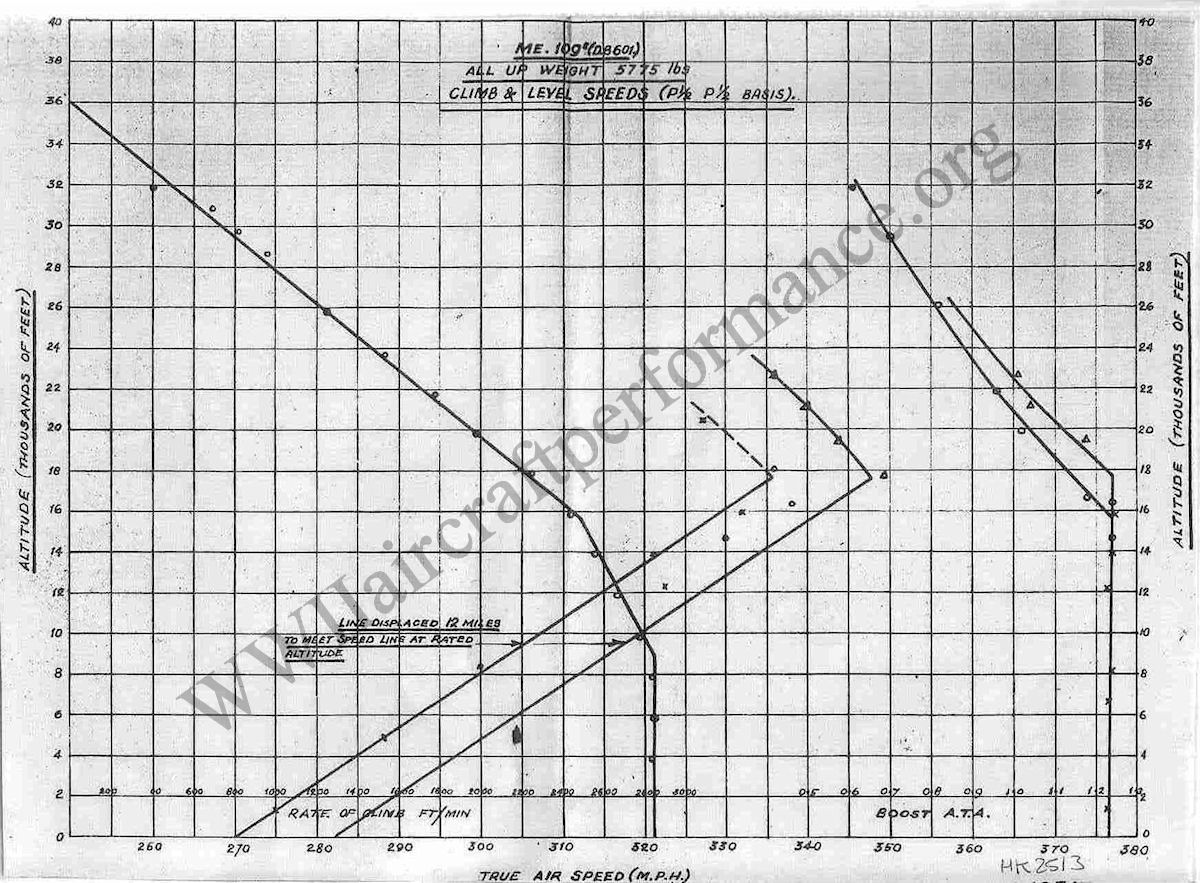Quote:
Originally Posted by klem

OK, thanks. I'll keep the V15a, Swiss and Handbook curves only and plot the CoD 109E-3 against them.
|
Then you are ignoring the other relevant material in favour only of what Kurfurst is advocating. Who has a point of view. Which may or may not be accurate...
That is not to say that I don't think the 109E-3/E-4 as currently constituted are too slow in CoD, (although proportionately MUCH better modelled than the Spitfire and Hurricane), they are likely too slow, however...
One, you should be aware the designation 'V15', indicates a pre-production, test aircraft, which may or may not include the standard loadout or equipment of the production version, this is not an E-3 or E4 or even an E-1, and this cannot be considered a test of a standard factory variant, it was done in 1938, before the E-3 was in production and before the tests done of the standard variants.
For example, a later 1939 test of an actual
German production 109E3 to determine the loss of speed as a result of the fitting of wing guns shows a top speed at sea level of 467 km/hr, less than shown with the V15 variant. The E-3 test was done at 1.3 ata, not full 1.4 boost, so the speed would be higher at a higher boost, with the additional 100 PS that would give, but it is hard not to accept the document is more relevant than the V15 document. Tests of the existing game 109E3 should see a speed of 467 km/hr at 1.3 ata, something which I believe it fails to achieve.

Two, in reference to another example, the Swiss tests, indications are the DB601Aa engine was an export only variant. And many facts bear this out. For example, none of the aircraft captured during the BoB had the Aa version of the DB-601 engine.
And the
German manual for the DB601A or B, which includes many of the charts seen on the WWII site and Kurfurst's site, and which is dated on issuance October of 1940, with extensions, has no reference to the DB601Aa. It can be downloaded here:
http://www.scribd.com/doc/32387854/Handbuch-DB-601-A-B
The DB601A/B engine was listed at 1100 PS at sea level, but that actually wasn't it's highest output point, that was at approximately 1.7 thousand meters, when it outputted approx. 1170 PS.
A translated captured German document which agrees with the suggestion no DB601Aa were used in the Luftwaffe aircraft is a bulletin the Germans themselves issued in November of 1940 allowing engine rpm to be increased over a certain altitude, and the only engines mentioned were the DB-601A or B and N.

In any case, dismissing the results of the British and French tests as irrelevant is not necessarily the correct choice as there is very detailed information provided there which can shed light on the 109E's performance. And for example, the British Rolls Royce tests tend to agree with the test of the E-3 I have shown above.
Messers Rolls Royce did their speed and climb tests of a captured 109E-3 at 1.23 ata, the 30 minute limit boost level, and achieved a speed of 285 mph/456 km/hr at sea level at that boost. Obviously top speed at 1.3 and 1.4 ata would be higher, but you can see a linkage with the German E-3 test at sea level.

So as I posted before, careful consideration of
ALL the facts is important when coming to a conclusion re. performance.